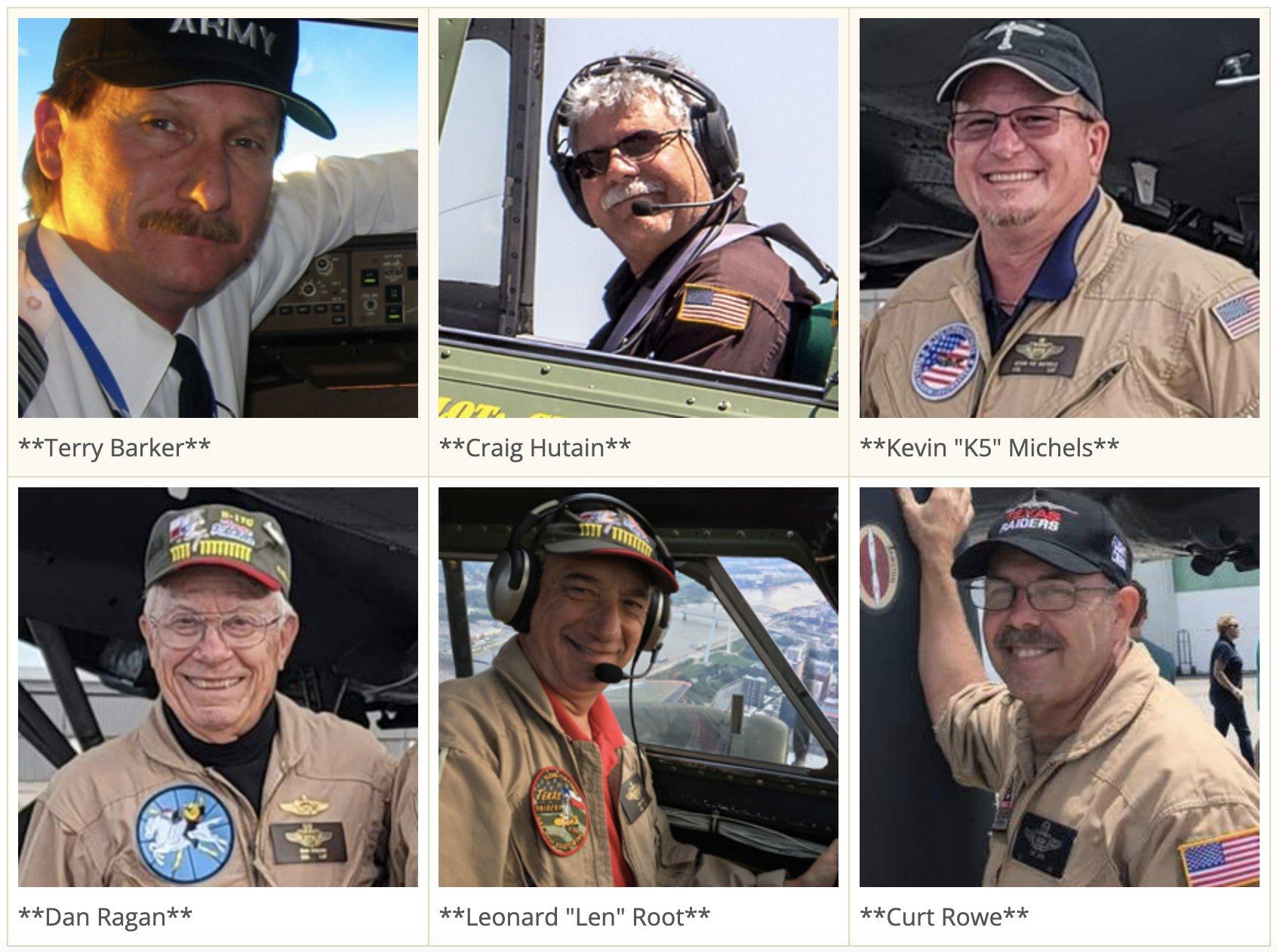
All five crew members on the B-17 and one in the P-63 were killed in the accident, which took place at the Dallas Executive Airport.
While the investigation gets underway, the Commemorative Air Force has released the names of the six fatalities from the Nov. 12 mid-air collision between a Boeing B-17G Flying Fortress bomber and a Bell P-63F Kingcobra fighter during a performance at the Wings Over Dallas airshow.
“Please join us in mourning the loss of our good friends and fellow airmen,” says a statement by the Commemorative Air Force, which owns the B-17 involved in the crash. There were no reports of injuries to spectators on the ground.
In videos captured by spectators and published on social media, the P-63F appears to slam into the B-17, severing the B-17’s rear fuselage from the nose and wings. The Kingcobra instantly breaks apart while the B-17 hits the ground within seconds, bursting into a ball of flames.
All five crew members on the B-17 and one in the P-63 were killed in the accident, which took place at the Dallas Executive Airport, officials say.
The National Transportation Safety Board is investigating the accident.
An electronic flight display from the B-17, nicknamed the Texas Raiders, and a GPS navigational unit from the P-63 have been recovered, Michael Graham, NTSB member, said during a press conference Nov. 14. Both were damaged during the accident and are being sent to the NTSB’s recorder lab in Washington to determine whether data and relevant information can be recovered.
Neither aircraft had been equipped with a flight data recorder or “black box,” nor are they required, Graham said.
“That’s one of the things we’ll look at down the road during the analysis portion of it if that’s something that needs to be recommended,” he said in answer to a reporter’s question. “I have nothing further on that to say if that’s what it would be.”
The NTSB’s investigation includes interviews with airshow personnel, review of pilot and maintenance records and the removal and layout of the wreckage aircraft, Graham said. It will analyze the communication between the pilots, the airshow plan and the routine.
The NTSB expects to release its preliminary report in four-to-six weeks followed by a final report in 12-18 months, he said.
The identities of the six fatalities, including five on the B-17 and one in the Kingcobra, included Terry Barker, Craig Hutain, Kevin “K5” Michels, Dan Ragan, Leonard “Len” Root and Curt Rowe, according to the Commemorative Air Force.
Barker and Root were retired American Airlines pilots; Hutain, the pilot of the Kingcobra, was a captain for United Airlines with more than 34,500 flight hours; Michels, from Austin, Texas, served in a number of roles on the flight crew; Ragan was an 87-year-old Korean War veteran; while Rowe was a long-term pilot and 30-year member of the Civil Air Patrol, according to reports.
The airshow and warbird communities are a close-knit family and the accident is felt by everyone, the Experimental Aircraft Association (EAA) says in a statement.
“These fellow aviators were dedicated to the mission of bringing flying history to the public, as a way of saluting those who have defended our freedom,” EAA says. “Our deepest condolences go to the families and friends of those who were lost. We share the pain from this tragedy.”
The crew of the Wichita-based restored B-29, known as Doc, had worked closely with the crew of the B-17.
“The airshow and warbird industry are a tight-knit family, and this tragedy will affect all of us,” Doc’s Friends, which manages the B-29, says in a statement. “We have a deep friendship and great relationship with the crew of the B-17 Texas Raiders, as well as the Commemorative Air Force Gulf Coast Wing, having hosted them at our hangar in Wichita earlier this year, as well as sharing the air show and tour stage with the CAF team in St. Joseph, Mo., and two weeks ago in Houston, TX. We stand united with our CAF colleagues and air show family and extend and extend our condolences and sympathies to those who lost their lives and to the families and friends they leave behind.”
The restored B-17 involved in the accident, a four-engine heavy bomber, was flown and maintained by the Commemorative Air Force’s Gulf Coast Wing. It was kept in a hangar at General Aviation Services, located at Conroe-North Houston in Texas. The aircraft was built in 1944 by Douglas Aircraft Corp., under license from Boeing, and delivered July 12, 1945, to the U.S. Army Air Forces. B-17s were key to U.S. airpower during World War II.
The Bell P-63 Kingcobra was developed by Bell Aircraft during World War II and used by the Soviet Air Force. On June 3, 2001, a Bell P-63A crashed in London during the Biggin Hill International Air Fair, killing the pilot, who was at the top of a vertical maneuver when he appeared to lose control of the aircraft.
